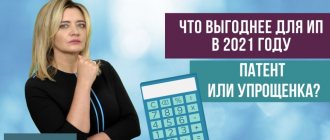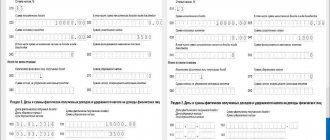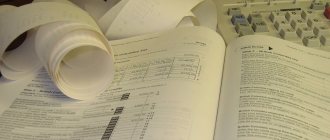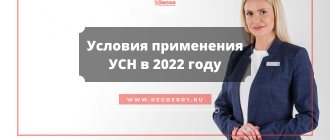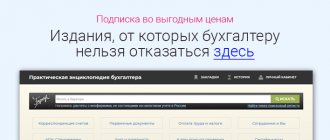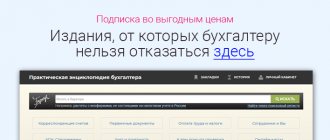Kontur.Accounting is a web service for small businesses!
Quick establishment of primary accounts, automatic tax calculation, online reporting, electronic document management, free updates and technical support.
Try it
The simplified taxation system is a simple and accessible regime. It is aimed at reducing the number of taxes paid and reporting generated and is aimed at small businesses. Therefore, for its application, simplified taxation system limits are set for the year. In this article we will tell you what restrictions there are for using simplification and what to do if you violate them.
STS limits in 2022 and 2022
Beginning entrepreneurs and organizations know about the existence of the simplified tax system and are trying to switch to this system, because it has many advantages:
- low tax rates: 6% of income and 15% of the difference between income and expenses;
- in the regions, the rate can be reduced even further: 1–6% of income and 5–15% of the difference between income and expenses;
- at the end of the year you only need to submit one declaration;
- The tax payment from the “income” base can be halved by the amount of insurance premiums for employees and individual entrepreneurs (or the tax payment can be reduced completely - in the case of an individual entrepreneur working independently and paying contributions “for himself”).
Individual entrepreneurs and organizations can switch to the simplified regime upon registration by submitting a notification within 30 days. If you are already operating under a different tax regime and want to switch to the simplified tax system, you can do this only starting next year; to do this, submit an application before December 31. Entrepreneurs can combine the simplified tax system with the patent system.
The transition to a simplified system and staying on it are associated with a number of restrictions. The limits on the amounts required to apply the simplified tax system grow annually, which simplifies the transition to the simplified tax system and makes it more accessible. In 2022, the conditions for applying the simplified tax system have changed significantly, so we will tell you about each of them in more detail.
Comparison of turnover by special modes
Let's summarize in table form.
| General taxation system | Simplified taxation system | Patent tax system | |
| Turnover restrictions | No | 150 000 000 | 60 000 000 |
| Limitation on fixed assets | No | 150 000 000 | No |
| Limit on number of employees | No | 100 | 15 |
| Restrictions on types of activities | No | Legal services, pawn shops and gambling establishments | A lot (Article 346.43, paragraph 2 of the Tax Code of the Russian Federation) |
| Taxes | Personal income tax, insurance payments (30%), value added tax (varies from 0 to 20% depending on the type of activity of the company), real estate tax. | Income tax (6%) or income minus expenses (15%) | 6% of the possible level of annual income in a certain field of activity, which is established by law |
Income limit
In 2022, the revenue limit is 206.4 million rubles. From 2022 to 2020, a limit of 150 million rubles was in effect. The new amount of revenue allows more companies to remain on the simplified tax regime, because since 2020, the annual income limit has increased by 37.6%. Starting from 2021, the limit will be indexed annually by the deflator coefficient.
In 2022, individual entrepreneurs and organizations using the simplified tax system can conduct activities generating income of up to 206.4 million rubles, and not be afraid of losing the right to apply the simplified tax system. But it is worth remembering that as soon as income exceeds 154.8 million rubles, tax will have to be paid at an increased rate - 8% for the simplified tax system “income” and 20% for the simplified tax system “income minus expenses”. We talked in more detail about calculating tax after exceeding limits in the article “Advance payments under the simplified tax system in 2022 and 2021.”
Please note that not all income received is included in the calculation.
Income included in the calculation:
- sales income;
- non-operating income;
- from the realization of rights to property;
- advances received.
Income excluded from the calculation:
- repaid loan;
- the deposit or deposit received;
- property received as a contribution to the authorized capital;
- from property received free of charge;
- funds received under an agency agreement;
- grants received;
- income from activities under a different taxation regime, when combining the simplified tax system with UTII or a patent.
Simplified people who want to stay on the simplified tax system, when approaching the income limit, try to reduce it. There are several ways to do this, but they are unsafe and well known to tax authorities, so they can easily figure out such fraud. For example, it is common to draw up two agreements with a counterparty - a sale and purchase agreement and a loan. That is, payment is transferred to you in the form of a loan, and next year they offset the requirements. In this case, the tax authorities can prove that the loan is fictitious, and the right to use the simplified tax system will be lost if, taking it into account, the income exceeds the limit.
Keep records, pay salaries, taxes and contributions, report via the Internet to Kontur.Accounting. The web service itself will calculate the amounts, select transactions, and generate reports. Get free access for 14 days
Should there be amopremiya?
Can the “simplifier” who makes the above-mentioned recalculation apply a depreciation bonus? This will be very beneficial for him, because then a larger amount will fall on the simplified tax system expenses, and the additional amounts of the single tax and penalties paid will decrease.
Most experts do not see any obstacles to this (unless we are talking about “old” property, for which the amopremium has already been included in expenses when working in a general mode). After all, paragraph 3 of Article 346.16 of the Code, which obliges recalculation for “early” sales, contains a reference to the norms of Chapter 25 of this legal regulation. There is no mention of any specific provisions here, which means that the “simplifier” has the right to resort to any depreciation rules, including those relating to the use of the specified premium.
But keep in mind that with regard to long-standing fixed assets, that is, those that have “switched” to the special regime with OSN, fiscal officials can give a number of counterarguments. Firstly, they will probably nod to the position of the Ministry of Finance that if the company did not take advantage of the right to apply the amopremium when putting the facility into operation, subsequently it can no longer be counted on (letter dated 04/21/2015 No. 03-03-06/1/22577 ). And, secondly, they will probably refer to paragraph 9 of Article 258 of the main tax document, from which it follows that the amopremium applies specifically to the initial value of the property, and not to the residual value, which is determined for the objects at the time of the transition to the “simplified tax system”.
Of course, you can argue with officials. Some judges believe that it is permissible to apply the amopremium even after the OS has been put into operation (see Resolution of the Administrative Court of the North Caucasus District dated July 13, 2015 No. F08-3911/2015). As for the residual value of the “transitioning” object, for the “simplified” it is essentially the original value. However, whether the game is initially worth the candle is up to you to decide.
If you decide to take advantage of such a preference, be sure to state in your accounting policy that in case of “early” sale of fixed assets, the company uses a premium when recalculating the tax base. This will certainly serve well in a potential dispute, and perhaps even avoid it altogether.
Income limit for 9 months
The income of companies planning to switch to the simplified tax system from 2022 should fit into the amount of 112.5 million rubles for the first 9 months of last 2020. From 2022, a deflator coefficient (1.032) will be applied to this amount, therefore, to switch to the simplified tax system from 2022, it is necessary that income for January-September 2022 does not exceed 116.1 million rubles. It is possible to get around this limitation by transferring income to the 4th quarter, because in this case the annual income is not important, only income for the first 9 months is taken into account.
Entrepreneurs and newly created organizations can become simplistic, regardless of how much income they receive. But when applying the simplified tax system, they must still ensure that income for the year does not exceed 206.4 million rubles (150 million rubles in 2022), otherwise they will have to return to the general regime.
Accounting for fixed assets under the simplified tax system “income minus expenses”
Taxpayers using the simplified tax system with the object “income reduced by the amount of expenses” are allowed to take into account expenses when calculating the single tax (subclause 1, clause 1, article 346.16 of the Tax Code of the Russian Federation):
- for the acquisition, construction and production of fixed assets;
- their completion, retrofitting, reconstruction, modernization and technical re-equipment.
You can also read about the accounting procedure and features of taxation of fixed assets under the simplified tax system in this article.
The procedure for accounting for fixed assets under the simplified tax system “income minus expenses” is prescribed in subparagraph. 3 and 4 tbsp. 346.16 Tax Code of the Russian Federation.
Residual value of fixed assets
For the transition and application of the simplified tax system, there is a condition that limits the residual value of fixed assets to 150 million rubles. Organizations and entrepreneurs with fixed assets whose residual value exceeds 150 million rubles do not have the right to switch to a simplified system. At the same time, entrepreneurs are not required to report information about fixed assets when switching to the simplified tax system, but if the residual value limit is exceeded while conducting business, the right to use the simplified system will be lost.
For this limitation, only depreciable fixed assets are taken into account, including leased property on the balance sheet. Land and other natural resources, inventories, goods, assets under construction, securities and financial instruments are not subject to depreciation and are therefore not taken into account. You can reduce the cost of assets by transferring them to conservation or temporarily selling them to a friendly person and renting them from him.
Cost limit
If the object has all the signs specified in clause 4 of FSBU 6:
- has a material form;
- used for normal activities;
- for use for a period > 12 months;
- capable of generating economic benefits in the future,
then, regardless of the established limit, it is the main means. At the same time, the organization may not apply FAS 6 to fixed assets that have a value below the limit .
It is possible to simplify the accounting of fixed assets, the cost of which is insignificant for accounting reporting - the principle of rationality (clause 7.4. PBU 1/2008):
- the benefits of obtaining information from the statements should not exceed the costs of its preparation.
For such fixed assets there will be no need to charge depreciation, annually check depreciation elements, test for impairment, etc.
Costs for the acquisition and creation of non-essential assets are immediately recognized as expenses of the period (clause 5 of FSBU 6/2020):
- Dt 90.02, 90.08 (26), 90.07 (44), 91.02 Kt 60.
Excerpt from UP:
How to set a cost limit?
Materiality is a subjective category for each organization; it may not be a quantitative, but a qualitative category.
Defined by:
- significant amount or not;
- whether it is important for users of accounting reporting or not.
Assets can be classified as non-essential in accounting policies based on the size and nature of the corresponding balance sheet item:
- according to the cost limit , below which the asset is considered insignificant. The limit must be reviewed annually;
and/or
- by groups of objects , information about which is insignificant (furniture, office equipment, household equipment, special means of production and others...).
Recommendations BMC R-126/2021-KpR “Cost limit for OS”.
Is it possible to set a cost limit for fixed assets of 100 thousand rubles? for a unit?
The legislation does not prohibit setting a limit of 100 thousand rubles. The Ministry of Finance clarified that it should be established per unit of asset, and not per group of assets (Letters dated 08/25/2021 N 07-01-09/68312, dated 01/18/2022 N 07-04-09/2185).
If you keep records in 1C, we recommend:
- set a limit per unit in the UE and no more than 100 thousand rubles.
Automation is related to NU - OS is recognized as property worth more than 100 thousand rubles. for a unit.
Features of 1C: the limit in accounting cannot be > 100 thousand rubles. for a unit.
Is it possible to classify all office equipment, computers, and furniture as non-essential assets from 2022, regardless of their TPI and cost? For example, a laptop worth more than 100 thousand rubles.
If you keep records in 1C, then you can classify all office equipment as non-essential assets, regardless of their SPI, but their value should not exceed 100 thousand rubles.
Automation of accounting for objects worth more than 100 thousand rubles, as non-essential assets, has not been implemented in 1C due to the peculiarities of the accounting system.
Non-essential assets in NU OSN
category of non-essential assets in the NU OSN . An object is considered depreciable when it is (clause 1 of Article 256 of the Tax Code of the Russian Federation):
- SPI > 12 months. and cost > 100 thousand rubles.
Costs for the acquisition of objects < 100 thousand rubles. are recognized as material costs and are expensed if they are economically justified at the time (Article 252 of the Tax Code of the Russian Federation, Article 254 of the Tax Code of the Russian Federation):
- use in production (works, services);
- commissioning of workwear, tools, fixtures, devices and other equipment.
Non-essential assets in the NU simplified tax system
category of immaterial assets in the NU simplified tax system . An object is considered depreciable when it is (clause 1 of Article 256 of the Tax Code of the Russian Federation):
- SPI > 12 months. and cost > 100 thousand rubles.
Costs for the acquisition of objects < 100 thousand rubles. are recognized as material costs and are included in the expenses of the simplified tax system after their actual payment (Article 346.17 of the Tax Code of the Russian Federation).
At the same time, the following conditions must be met:
- materials are accepted for registration;
- payment for materials has been made.
At the same time, it is possible to identify separate categories of fixed assets that are significant for disclosure in reporting . They can be taken into account according to the rules of FSBU 6, regardless of cost
If we provide housing and communal services and cannot write off fixed assets below the limit from our balance, because we need them for the tariff, what should we do?
The cost limit in accounting is established by each organization in its accounting policy. In your case, you need to select groups of operating assets that are essential for your reporting and do not set a limit for them. If we are talking about all operating systems, then do not set a limit at all. Then the balance sheet will include all assets of private equity assets > 12 months. regardless of cost.
Soon 1C will automate simplified OS accounting based on a group unit.
Source documents
Writing off the cost of non-essential assets in accounting at the time of acquisition does not require registration of a primary account - based on the provisions of the CP.
In NU, expenses must be documented at the time of transfer of the asset into operation (use):
- the document approved in the UP for these purposes is drawn up. In 1C, from the document Consumption of Materials you can print the Request-invoice , Certificate of write-off of materials .
Where in the 1C settings should I indicate the OS cost limit selected in the accounting policy?
There is no cost limit set in the 1C settings. It may not be available for a certain OS group at all.
Therefore, the accountant independently qualifies the object and determines the procedure for accepting it for accounting if the OS:
- less than the limit - in the Receipt document (act, invoice, UPD) ;
- more than the limit - in the document Receipt of fixed assets or Acceptance for accounting of fixed assets .
See also:
- Accounting policy 2022
- Options for receiving OS
- Accounting policy designer
- Example of UE complete OSNO from 2022
- Example of UE simplified OSNO from 2022
Average number of employees
Payers of the “simplified” tax must comply with the limit on the number of employees - 130 people. In 2022, there was a limit of 100 people, but from 2022 a transition period was introduced. According to the new rules, it is possible to apply the simplified tax system with an average number of 130 people, but with a number of employees in the range of 100-130 employees you will have to pay tax at an increased rate - 8% for the simplified tax system “income” and 20% for the simplified tax system “income minus expenses.” If the average number reaches 131 people, the right to the simplified tax system will be completely lost from the beginning of the quarter in which the excess occurred.
To calculate the average number, take into account your employees, external part-time workers and individuals on GPC contracts (except for individual entrepreneurs and the self-employed). Women on maternity and parental leave do not need to be included in the calculation, except for those working part-time or at home and retaining the right to social security benefits. As well as student workers taking entrance exams and on additional leave without pay.
The calculation of the number is carried out not at the end of the period, but for the entire period. Therefore, even if a company currently employs more than 130 people, it can still retain the right to apply the simplification if the average number for the entire period does not exceed the limits.
For example, if a company had 120 employees from January to July, and from August 13 they hired 16 more new employees, then the average number will be calculated as follows:
- 120 people × 7 months = 840 people from January to July;
- (120 people × 12 days of August + 136 people × 18 days of August) / 30 days = 130 average number of people in August;
- 136 people × 4 months = 544 people from September to December;
- (840 people from January to July + 130 people in August + 544 people from September to December) / 12 months = 127 people average number for the year.
Even though the number of personnel exceeded 130 people, the right to apply the simplification will not be lost.
Selling early won't lead to problems
When selling fixed assets, “simplers” include their selling price in income. In this case, nothing will be included in expenses, since the costs of the facility will already be completely written off.
However, there is an extremely significant exception to this rule, enshrined in paragraph 3 of Article 346.16 of the Tax Code of the Russian Federation. The fact is that the possibility of accelerated write-off of the value of an asset under a special regime is a preference that some companies (IEs) may try to use to obtain an unjustified tax benefit. In order to cool the ardor of such enterprising individuals, the Code stipulates a “protective mechanism”. Its meaning is that if the OS is sold soon, the “simplistic” OS will be in for a real headache. We are talking about a situation when an object is sold before the expiration of 3 years from the end of the year, when its cost is taken into account in the simplified tax system expenses. And for property with a service life of over 15 years - until the expiration of 10 years from the date of its acquisition.
In this case, the special regime officer will have to recalculate the base for the single tax. Keep in mind: this rule also applies to fixed assets acquired before the transition to the simplified tax system (see letter of the Ministry of Finance of Russia dated July 29, 2016 No. 03-11-06/2/44660).
Such a recalculation is necessary, even if on the date of sale of the asset the special regime officer has already changed the object according to the simplified tax system to “income”. The same should be done by a company that transferred a fixed asset to its legal successor on the separation balance sheet in connection with the reorganization. The same applies to an enterprise that transferred OS “ahead of time” under a gift agreement or as a contribution to the authorized capital of another organization (see letters of the Ministry of Finance of Russia dated March 26, 2009 No. 03-11-06/2/50 and No. 03-11- 06/2/51, dated 04/06/2012 No. 03-11-06/2/51, dated 04/14/2014 No. 03-11-06/2/16837). But if the property is disposed of due to fire, theft, theft, obsolescence, etc., the tax base is not adjusted. This conclusion follows from the letter of the Federal Tax Service of the Russian Federation for Moscow dated December 1, 2005 No. 18-11/3/88107.
So, what are the specific actions of the “simplifier” during the “early” implementation of the OS? First of all, he needs to exclude the written-off value of the asset from the simplified taxation system. Then calculate depreciation on it using the “profitable” rules and include it in expenses. Moreover, for the “old” OS - starting from January of the year of transition to the special mode, up to and including the month of sale. And for new ones - starting from the month following the day when this OS was put into operation. Next, you need to pay an additional single tax and penalties (except for the situation when a loss arose in the previous period, which remained after recalculation of the base) and submit “clarifications”. Please attach an accounting statement explaining the reasons for the changes. At the same time, there is no need to make corrections to the Books of past periods. But the Book for the current calendar year will have to be corrected (clause 3 of article 346.16, clause 4 of article 259 and clause 5 of article 259.1 of the Tax Code of the Russian Federation, letters from the financial department dated 04/26/2019 No. 03-11-11/30795 and from 02/13/2015 No. 03-11-06/2/6557, Federal Tax Service of Russia dated 12/14/2006 No. 02-6-10/ [email protected] ).
There is no need to recalculate income tax upon the “early” sale of an object purchased before the transition to the simplified tax system.
Though it pleases. Example 2. What to do with the “early” sale of fixed assets
Let’s use the conditions of the previous example and assume that the company sold this fixed asset (whose fixed income index is 10 years) in August of the next year (that is, 2020). The company’s accountant first excluded it from the simplified tax system. expenses 2022 costs for the purchase of an object, reflected on September 30 and December 31 (total amount - 500,000 rubles). Then he showed in the simplified taxation system expenses of the previous year the depreciation on the sold asset (accrued using the straight-line method) for 4 months - from September to December. It amounted to 16,667 rubles. (RUB 500,000 / 10 years / 12 months x 4 months). After this, the company paid an additional advance payment for 9 months of 2022, tax for the same year and penalties, and submitted an updated declaration to the Federal Tax Service for this tax period with an accounting certificate and calculation. And in 2022, expenses included depreciation on fixed assets for 8 months (from January to August) in the amount of 33,333 rubles. (500,000 rubles / 10 years / 12 months x 8 months), but income includes its selling price. The company’s accountant rounded the depreciation amounts to full rubles in accordance with the recommendations of the Ministry of Finance of Russia (letter dated July 24, 2013 No. 03-11 -06/2/29385).
And about one more interesting situation from practice. The company's accountant knew in advance about the future “early” sale of the property. In order to avoid the upcoming hassle, he decided not to accept the costs of purchasing this OS in the corresponding tax period. When selling an asset, is it possible to include in the simplified taxation system expenses the amount of depreciation accrued on it? No, according to the Ministry of Finance. Without proper consideration of the value of the property, depreciation deductions for its “early” sale cannot be reflected (letter dated April 12, 2010 No. 03-11-06/2/58).
Participation of other legal entities
For organizations on the simplified tax system, the share of participation of other legal entities is limited - a maximum of 25%. That is, the authorized capital cannot consist of contributions from other organizations of more than 25%, and the size of participation of individuals, individual entrepreneurs and the state does not matter. Exceptions are listed in paragraphs. 14 clause 3 art. 346.12 Tax Code of the Russian Federation. This limitation can be circumvented in several ways.
- Increase the authorized capital through contributions from founders-individual entrepreneurs and individuals. This will allow you to change the ratio of shares and stay within the 25% limit.
- Sell a stake in the company to one of the founders. If the legal entity is the only founder, you can sell 75% of the authorized capital of the subsidiary to trusted persons or real owners of the business. Then the company's capital structure will meet the conditions.
- Maintain control functions over the legal entity by reducing its share in the authorized capital. For example, an organization with a 25% stake may have 75% of the profits and votes. Such a decision may be negatively perceived by tax authorities.
Write-off of costs for purchasing an OS
Costs for fixed assets cannot be written off as “income” under the simplified tax system. This opportunity is available only to those who have chosen the simplified tax system “income minus expenses”. Moreover, those “simplified” people who purchased property while already on the simplified tax system can pay off the cost of the operating system much faster than those working on the general system.
Expenses for the acquisition of operating systems can be taken into account only if:
- they were fully paid;
- documents confirming ownership were drawn up for them;
- OS is used to carry out business activities (for example, an entrepreneur can accept a personal car as an expense only if his type of activity is related to transportation - in such cases, a personal car is a means of labor and can be included in the OS).
Any major purchase of an individual entrepreneur on the simplified tax system must have a clear justification. Tax authorities pay close attention to this, and cases where the acceptance of fixed assets as expenses that reduce the tax base were found to be unlawful are not uncommon.
Sanctions for any actions that result in an underestimation of the tax base are punishable by a hefty fine - 20% of the unpaid amount, but not less than 40,000 rubles. (Article 120 of the Tax Code of the Russian Federation).
Write-off of fixed assets under the simplified tax system acquired during the operation of this regime is based on the sum of all costs for their acquisition:
- the cost of the fixed asset under the contract;
- expenses for consulting and other services necessary for the acquisition of OS;
- customs duties and fees associated with the purchase;
- remuneration under an intermediary agreement, if the fixed asset was purchased under a commission agreement, agency agreement, etc.
If the organization acquired a fixed asset after the transition to the simplified tax system
When an asset is purchased during the period of application of the simplified tax system, its cost should be written off from the moment of commissioning (subclause 1, clause 3, article 346.16 of the Tax Code of the Russian Federation) during the calendar year (one tax period) in equal shares, taking them into account on the last day of each quarter ( Clause 3 of Article 346.16 of the Tax Code of the Russian Federation). However, if the fixed assets are not paid in full, only the amounts actually paid will be accepted as expenses during the reporting (tax) period (subclause 4, clause 2, article 346.17 of the Tax Code of the Russian Federation, letter of the Federal Tax Service of Russia dated 02/06/2012 No. ED-4-3/1818 ).
For example, an asset worth RUB 400,000. was paid for and put into operation at the beginning of the year, therefore, each quarter, starting from the first, that is, at the end of March, June, September and December, 100,000 rubles should be taken into tax accounting. If the same facility was put into operation and paid for in the 3rd quarter, its cost must be divided by 2 and each part taken into account at the end of the 3rd and 4th quarters.
To establish the moment when the fixed assets were accepted as expenses, it is necessary to determine in which quarter the property was paid for and put into operation.
IMPORTANT! From September 29, 2019, OS, the rights to which are subject to state registration, are written off according to the general rules. There is no longer any need to wait for documents to be submitted for state registration. This requirement from clause 3 of Art. 346.16 of the Tax Code of the Russian Federation has been excluded (law dated September 29, 2019 No. 325-FZ).
Compared to the depreciation method, in which the write-off of an asset is extended over a much longer period, attributing the cost of fixed assets to expenses under the simplified tax system is done over a fairly short period.
How to write off expenses for an operating system if it was purchased before the transition to the simplified tax system
For example, a company switched from the general taxation system to the simplified taxation system. The cost of the fixed asset (residual value at the time of transfer) in this case can be written off in different ways. The write-off method depends on the useful life of the OS. The cost is also divided equally, but again not always.
If the period of use is less than 3 years, then write-off in equal shares occurs in the first year according to the scheme in force for OS acquired or created during the period of application of the simplified tax system. If the period of use ranges from 3 to 15 years, then during the first year of operation on the simplified tax system you need to write off 50% of its cost, the next year - 30%, and the third year - 20%. If the period of use is more than 15 years, then the asset is written off in equal parts annually over 10 years (subclause 3, clause 3, article 346.16 of the Tax Code of the Russian Federation).
Example
The Gazelle truck was purchased before the transition to the simplified tax system. To assign it to a specific depreciation group, you need to know the technically permissible maximum weight and engine type: gasoline or diesel (indicated in the vehicle passport). The technically permissible maximum weight of this model is 1500 tons, the engine type is gasoline. Therefore, the vehicle belongs to group 3.
The accountant decided that the life of this car is 5 years. At the time of transition to the simplified tax system, its residual value (initial - 700,000 rubles) amounted to 525,000 rubles. Therefore, the write-off of its residual value must be carried out as follows: in the first year after the transition to the simplified tax system - 262,500 rubles, in the second - 157,500 rubles, in the third - 105,000 rubles.
When switching from the general regime to the simplified tax system, there is also a need to restore the tax accepted for deduction. VAT is not restored in full, but in proportion to the residual value of fixed assets in the last quarter before the transition and is taken into account as other expenses.
What to do if the fixed asset was purchased before the individual entrepreneur was registered on the simplified tax system
There is no clear prohibition on including the cost of such funds in expenses in the Tax Code of the Russian Federation. However, current practice clearly shows that including it in expenses is dangerous. But its sale is a completely different matter, and it is necessary to pay tax on the income received from the sale of such a fixed asset under the simplified tax system.
How to write off the cost of fixed assets as expenses if the object of taxation has changed
For example, a company switched from the “income” object to “income minus expenses”. Is it possible to write off the cost of an asset as an expense if it was acquired before the transition? This is indeed possible, but only if the OS was accepted for use or was paid for after the transition.
Creation of branches
Organizations using the simplified tax system cannot have branches. A branch is a separate subdivision located outside the location of the organization and performing all or part of its functions. The branch receives property from the legal entity that created it and is endowed with a manager acting by proxy. An important distinctive feature of the branch is its inclusion in the Unified State Register of Legal Entities.
Other separate divisions, for example representative offices, can be opened on the simplified tax system. If a separate division does not meet all the conditions necessary for branches, then it cannot be recognized as a branch. Therefore, some companies disguise branches as separate divisions. If you do not reflect the branch in the constituent documents, limit the number of functions and staff of specialists, do not appoint a manager and do not open a current account, it will be difficult to prove that a separate division is a branch. In addition, the supervisory authority must prove the existence of a branch.
Keep records, pay salaries, taxes and contributions, report via the Internet to Kontur.Accounting. The web service itself will calculate the amounts, select transactions, and generate reports. Get free access for 14 days
What to do if you violate the restrictions
If you violated the restrictions that we discussed above, you will have to stop using the simplified system from the beginning of the quarter in which they were allowed. Notice of termination of the simplified tax system must be submitted within 15 days after the end of this quarter. For example, if the limits are violated in the second quarter, the organization will be considered to have switched to OSNO from April 1, and will need to submit a notification to the tax office before July 15. The notification form was approved by order of the Federal Tax Service dated November 2, 2012 No. ММВ-7-3/829. If you do not submit a notification or do not do it on time, you will be fined 200 rubles, and officials may be additionally fined in the amount of 300 to 500 rubles. Here we wrote how to switch from the simplified tax system to OSNO.
Having lost the simplified tax regime, you must submit a declaration by the 25th day of the month following the quarter in which the right to the simplified tax system was lost. Draw up a declaration for the period from the beginning of the year until the quarter in which you lost the right to use the simplified tax system. Simplified tax must be paid within the same period. Failure to submit a declaration entails liability under Article 119 of the Tax Code of the Russian Federation - a fine of 5% of the amount not paid on time for each month, but not less than 1000 rubles and not more than 30%.
Having switched to the general regime, you need to pay and calculate taxes in the manner prescribed for new organizations and individual entrepreneurs. If you are late in making monthly payments for the quarter in which you switched to a different tax system, you will not have to pay penalties or interest. But late payments for the next quarter already threaten fines and penalties.
Income limit on simplified tax system
Exceeding the established maximum limit on the amount of revenue leads to the loss of the right to apply the simplified special regime from the beginning of the quarter in which such an excess occurred (clause 4 of Article 346.13 of the Tax Code of the Russian Federation). Having lost the simplified tax system, the taxpayer will be forced to apply the OSNO (general taxation system), and he will be able to return to the simplified system no earlier than a year after losing the right to it.
The income limits established by law apply to all taxpayers (legal entities and individual entrepreneurs) using the simplified tax system, regardless of which tax object they apply - “income” or “income minus expenses”.
Every year, the limit must be indexed by a deflator coefficient established by the Government for the corresponding calendar year (clause 2 of Article 346.12 of the Tax Code of the Russian Federation).
Let us recall under what conditions the “simplified language” could be used, up to what turnover, i.e. income level in 2022.
150 million rubles. – this is the maximum amount that could be earned on the simplified tax system during 2020. If it was exceeded, a “flight” from the “simplified” was inevitable. Entrepreneurs and companies that lost the right to the special regime in 2022 will be able to return to it no earlier than 2022.
Those who have a limit of 150 million rubles. in 2022 did not exceed, the simplified tax system is applied in 2022 - subject to compliance with all other criteria and limits established by the Tax Code of the Russian Federation for “simplified people” (Articles 346.12, 346.13 of the Tax Code of the Russian Federation).
The deflator coefficient for 2022 was equal to one, therefore, during indexation, the size of the maximum limit actually did not change (Clause 4, Article 4 of Law No. 243-FZ of 07/03/2016).
